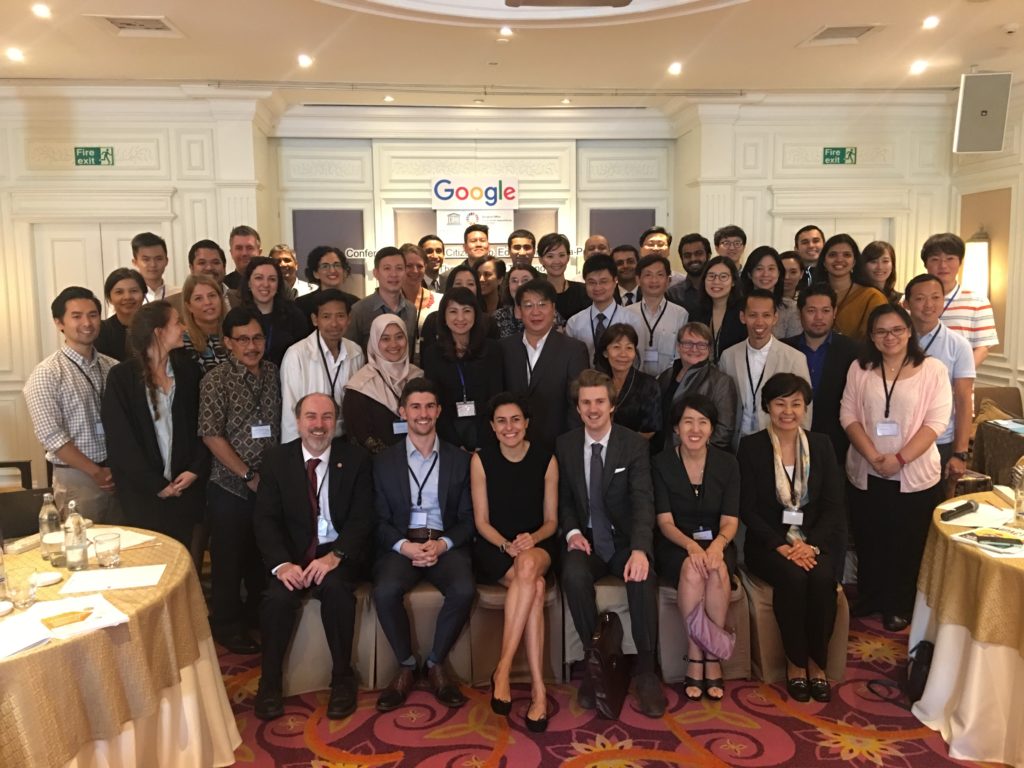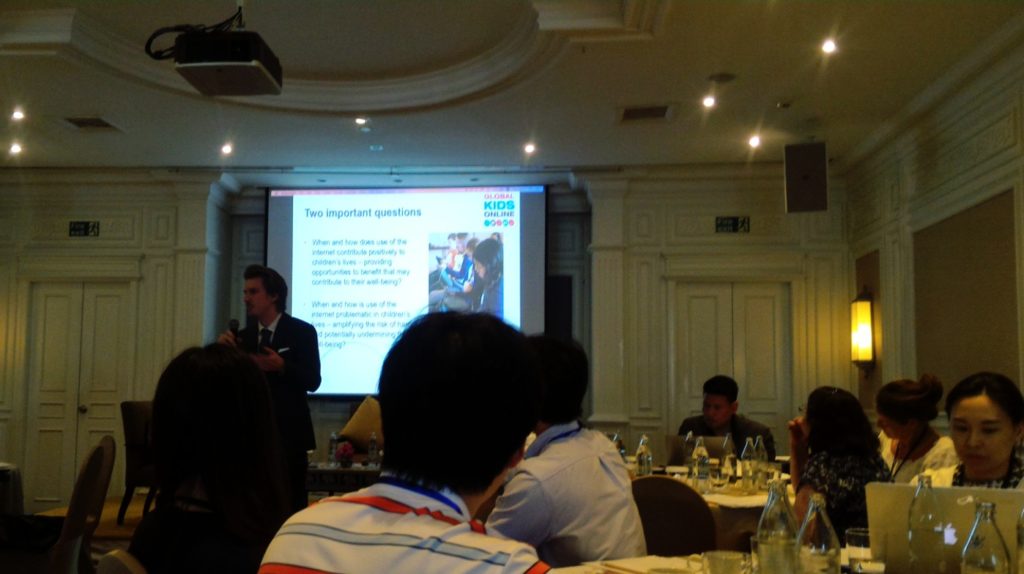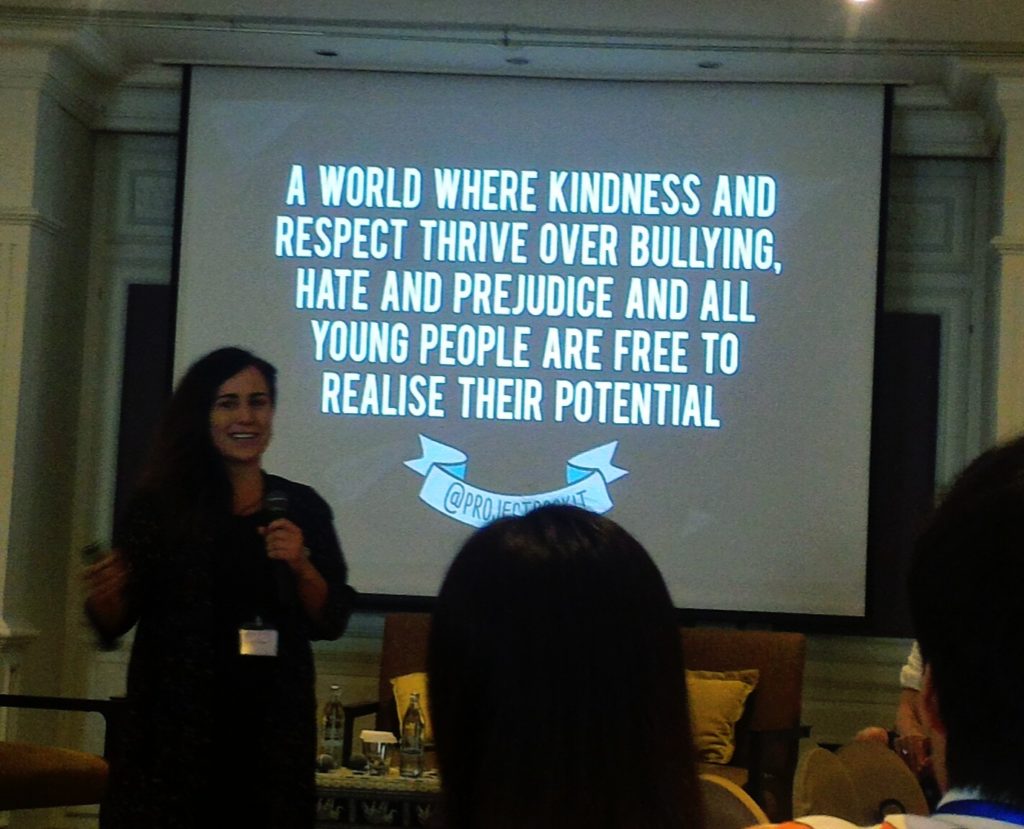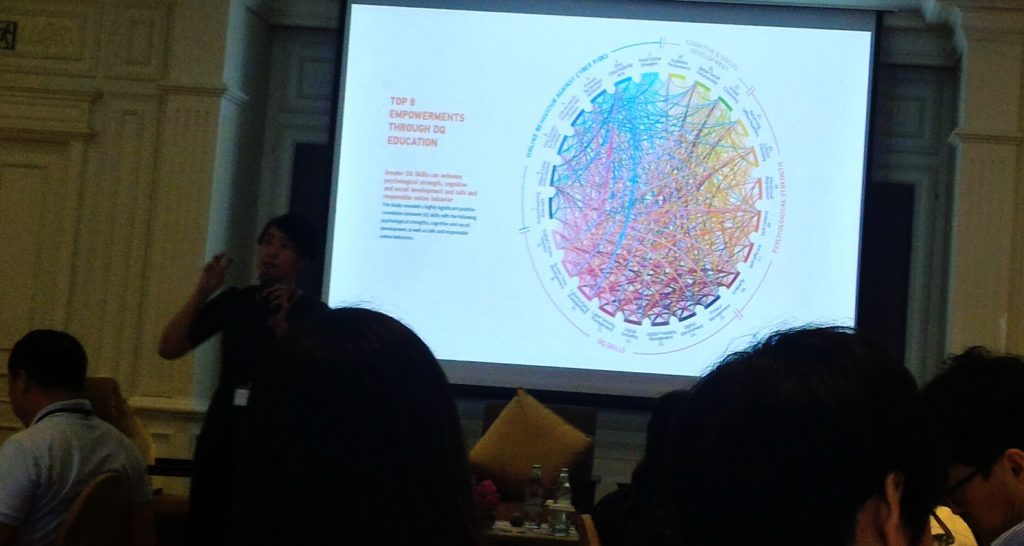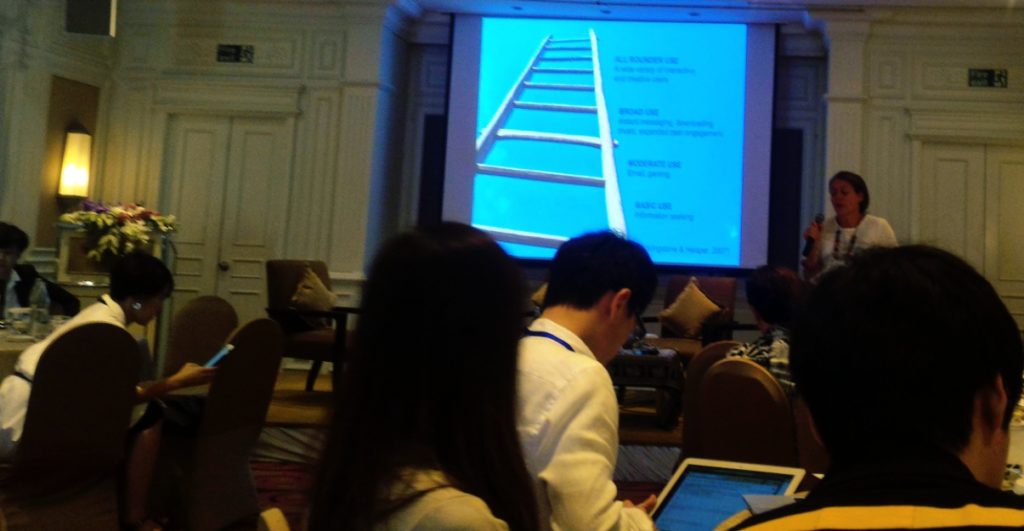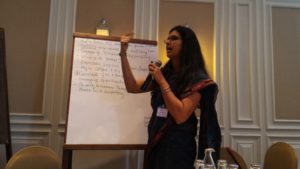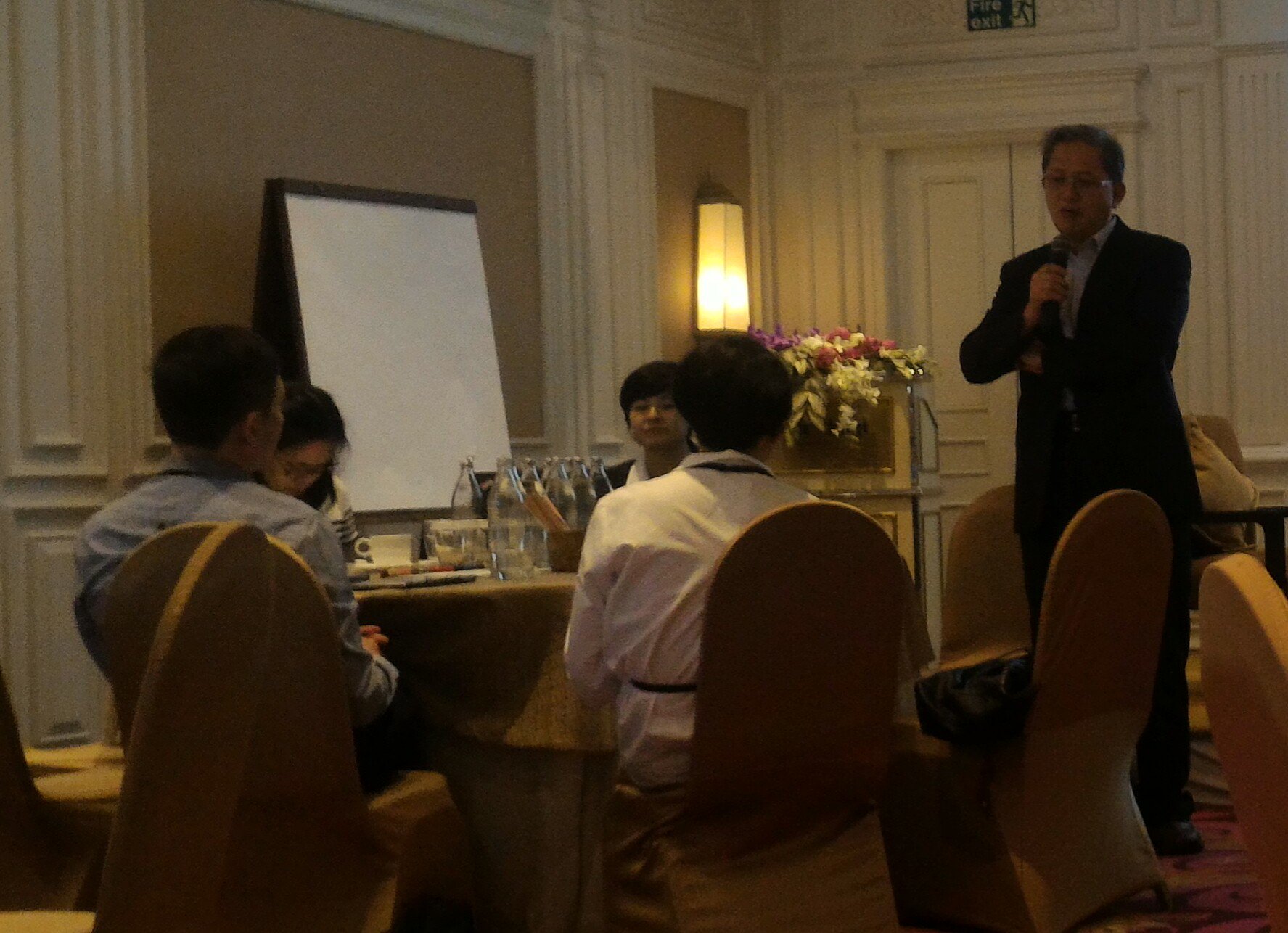Digital Citizenship in The Asia Pacific
I think that our grandchildren will probably regard the distinction we make between what we call the real world and what they think of as simply the world as the quaintest and most incomprehensible thing about us.
– William Gibson
(Digital) Citizenship:
Consider walking from one corner of the street to the other. In doing so, we are making our way through two realities at once. One being the offline physical reality and the other being its online digital counterpart. If it’s not our cellphone that is leaving traces, then it will be the omnipresent closed circuit cams or maybe a drone that’s capturing us in pixels in its all seeing eye.
Our offline activities now have an online shadow and vice versa. The interface between the two is everywhere and almost invisible.
This new “all-at-once-connected” reality has presented us with a spectrum that ranges from opportunities and conveniences to challenges and risks. This is true for both children as well as adults.
But it is the younger generation who are natives to this landscape. For some of them, the “all-at-once-connected” is the only reality they have known. Their minds have no distinction between the online and theoffline world. Across the world, efforts are being made to enable them to participate in this brave new world – to effectively leverage the positives as well as manage the risks.
And in this process, realize a kind of ‘citizenship’ of these new spaces and realities.
The Conference on Digital Citizenship Education 2017:
On 2nd & 3rd of March 2017, Google Asia-Pacific in collaboration with UNESCO Asia Pacific Regional Bureau for Education invited the Aarambh India Initiative for the Conference on Digital Citizenship Education (#DCE2017) in Bangkok. It was a platform where civil society organisations, researchers, academicians & policy makers working on the issue from across the region were invited to share their research, policies, programs, experiences and stories.
Out of the ensuing debate and discussion, the attempt was to put together a robust framework that nations could implement so, to put it quite simply – children& young people can learn how to best use the internet (safely, positively & creatively).
Some of the key learnings that we had from the conference are presented below:-
A Definition of Digital Citizenship
- Being Able to Find, Access, Use & Create Information Effectively
- To Engage With Other Users & With Content in Active, Critical, Sensitive & Ethical Manner
- Navigate Online & ICT environment safely & responsibly while being aware of one’s own rights
– UNESCO Policy Review
Balancing Opportunities & Risks:
Among the ideas presented at #DCE2017, one that resonated with everyone was the need to move away from discussing “opportunities” & “risks” as a dichotomy. A more ideal model was that of a more complex spectrum where risks don’t always lead to harm and opportunities to benefits.
Simply focusing on ‘mitigating risks’ and ‘online safety’, puts one in the danger of limiting discussions on “citizenship”.Safety must sit alongside, and be integrated with, a broader range of considerations, including promoting a positive uptake of online opportunities.
The Young & The Resilient:
While frequent use of the internet presents a higher exposure to risk, some research has proven that it also helps builds resilience.Contrary to popular perception it is also seen that young people don’tgo into a moral vacuum in the online world. They have the potential to adapt, survive and transform in the world of digital technology.
“Digital Resilience” was a term that frequently came up. It includes the ability to:
- understand and be aware of potential for harm
- effectively self-regulate
- to deal with negative experiences online, tackle adverse situations and experiences
- turn negative emotions into positive or neutral feelings
Functional, Social & Emotional Skills:
It is recommended that Foundational IT skills needed to be taught to the child at a young age (as young as three). The learning process needs to be inspiring and look at capturing the imagination, rather than constraining it. Coding should be considered and taught as a language rather than as math.
There was a call to move beyond mere functional skills. Digital social skills like empathy, respect, critical thinking and responsibility need to be imparted to the child.
A textbook-and-lecture approach would not be suitable. Rather than sticking to the rote learning of the syllabus, teachers and adults need to have the ability to engage the child over a long period of time. The best interventions with the child are usually culturally specific.
Digital citizenship is more than just being ‘responsible’. Innovation & creativity are important aspects that must be fostered.
The School & The Family
Shutting down & controlling internet access in school is not an option anymore.
Children rarely spoke out about experiencing cyber-bullying or online abuse with their teachers. One of the reasons for this was that most teachers were lacking the skills to handle such situations. Digital skills must be part of the teacher’s training.
Teaching digital citizenship in school must follow an integrated approach with full parental engagement.Children and youth are far more advanced in their digital skills as compared to parents and teachers. It is important for adults to take cognizance of this fact and use this as an opportunity to learn from them. The process can be empowering for both the adult and the child.
We need to support children to develop their own way of talking about digital spaces. Platforms where the youth can participate and engage with each other must be created. Peer groups are excellent methods of children helping each other learn digital skills and build collective& individual resilience.
While school interventions are necessary, it was generally agreed that for a more holistic development of the child, building the capacities of the child’s family and community were essential.
In most scenarios, parents are unsure about what to expect from children in the online space. This creates confusion and paranoia in their minds.
Listening to Young Voices:
Any discussion regarding digital citizenship cannot be done in isolation with a handful of experts and academicians deciding the fate of a large population who are users of the digital world. It was agreed that there is a need to listen to the voices of the youth across the region and it is from these voices that appropriate programs and policies could emerge.
The outlook and concerns regarding digital citizenship that youth could be completely different than adults. Thus engaging with them in a meaningful way – sustained and long-term engagement to help them voice their opinions and challenges is the key. These have to reflect in programs and policies. They are technically citizens in waiting in the real life, however they are the ones who are already a part of the digital world and control the way the digital world operates.
Research:
A cross-national research study within the Asia Pacific region is lacking.
There is a need to create a comparative research framework and appropriate research tools specifically to guide education sector policies and programs.
Larger trends and numbers are available but considering the phenomenal transformation of the online space and its capacity to effect various aspects of life and reality, long term qualitative research is lacking.
Young people thinking about digital spaces not as “tool” but as a “setting. We need to capture the stories of young people in online spaces so we can devise appropriate responses
Basing the advocacy on big data numbers causes policy to overlook crucial subtleties especially in policies concerning children. There needs to be further participation of younger voices and feedback must be taken from them before policies are implemented.
Questions & Issues That Remained:
What if people don’t have access to the internet? Are we leaving them out of discussions regarding Digital Citizenship?
There is a Need to think of Online Safety as a separate domain.
A large part of the public internet is governed by large corporations. There is a need to create frameworks with their platforms that encourages Digital Citizenship.
How do we engage children & young people in conversations that shape policy around digital citizenship?
There is an urgent need to think about measuring community factors that influence digital competency.
The Way Forward
As Director Kim of UNESCO Bangkok put it:- “Transnational Challenges need Transnational Solutions.”
More than ever, there is now a need for sharing resources and collaboration between organizations, institutions and nations. There is a need to experiment and to innovate, not just with structures and platforms. But in the way we negotiate life and reality.
It is a brave new world out there. Children in every nation are putting it together, creating it as they go along. What we can do is support them to the best we can.
Remove the word digital. Focus on how children can be ideal citizens using digital tools.
– Dr. Amanda Third
Resources:-
UNESCO’s Policy Review: http://unesdoc.unesco.org/images/0024/002468/246813e.pdf
The Global Kids Online Research Toolkit:- http://blogs.lse.ac.uk/gko/tools/
Digital Quotient: 8 Digital Skills to Teach our Children:- https://www.weforum.org/agenda/2016/06/8-digital-skills-we-must-teach-our-children/
ThinkYoung’s Digital Citizenship Research: http://www.thinkyoung.eu/digitalcitizenship



